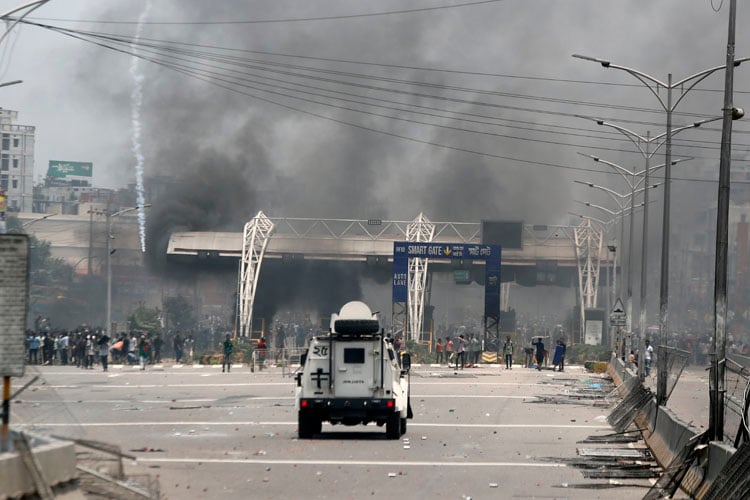News Flash
News Flash

DHAKA, Feb 12, 2025 (BSS) - Around 1,400 people were killed during the July uprising while majority of them were killed by military rifles and shotguns loaded with lethal metal pellets, according to the Fact-Finding Report of the UN Office of the High Commissioner for Human Rights (OHCHR).
The Fact-Finding Report titled 'Human Rights Violations and Abuses related to the Protests of July and August 2024 in Bangladesh' was released today.
The report states: "OHCHR finds that there are reasonable grounds to believe that the former Government and its security and intelligence apparatus, together with violent elements associated with the Awami League, systematically engaged in serious human rights violations, including hundreds of extrajudicial killings, other use of force violations involving serious injuries to thousands of protesters, extensive arbitrary arrest and detention, and torture and other forms of ill-treatment."
OHCHR further has reasonable grounds to believe that these violations were carried out with the knowledge, coordination and direction of the political leadership and senior security sector officials, according to the report.
OHCHR assesses that as many as 1,400 people could have been killed during the protests, the vast majority of whom were killed by military rifles and shotguns loaded with lethal metal pellets commonly used by Bangladesh's security forces, the report reveals.
It shows thousands more suffered severe, often life-altering injuries. More than 11,700 people were arrested and detained according to Police and RAB. Reported fatality figures indicate that around 12-13 percent of those killed were children.
"Police and other security forces also subjected children to targeted killings, deliberate maiming, arbitrary arrest, detention in inhumane conditions, torture and other forms of ill-treatment."
Having been at the forefront of the early protests in particular, women and girls were also attacked by security forces and Awami League supporters. They were specifically subjected to sexual and gender-based violence, including gender-based physical violence, threats of rape and, in some documented cases, sexual assault perpetrated by Awami League supporters, according the report.
The report further states, "Based on first-hand testimonies from victims and witnesses and image and videos analysis, OHCHR could ascertain that, as protests expanded, a broad array of armed Awami League supporters acted jointly, or in close coordination, with the Police against protesters, using extensive, unlawful violence supporting the Government's efforts to suppress the protests."
In many operations, it says, armed Awami League supporters lined up along with the police or sheltered behind police lines, before launching attacks timed to support the Police's own efforts to disperse violently the protests. "Awami League supporters also stopped and searched people, apprehended protesters and handed them over to the police in an organized, seemingly prearranged fashion."
The report also mentions that the Bangladesh Police had provided OHCHR with the names and functions of 95 members of the police, Awami League or Awami League affiliated organisations whom the Police considers having provided weapons to citizens for use in violent attacks during the protests, including 10 persons who were members of parliament at the time, 14 local Awami League leaders, 16 Jubo League leaders, 16 Chhatra League leaders and 7 members of the police.